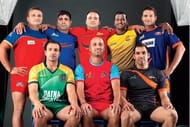Kabaddi is one of the oldest sports in India. And needless to say, it is an extremely physical sport that requires the utmost fitness and stamina from the players.
In this culturally rich sport, injuries are a common sight due to the physical nature of the game play. A whole army of sports physiotherapists, psychologists and doctors work behind the scenes to ensure the players are in the pink of health and can produce optimum performance on the mat.
Kabaddi being a contact sport, coupled with the rough surface of the playing mat, the following injuries are the most common:
- Contusion – damage to small blood vessels which causes bleeding within the tissues.
- Abrasion – Injuries that result from a fall on a hard surface that cause the outer layers of skin to rub off.
- Sprain – These are acute injuries that vary in severity but usually result in pain, swelling, bruising and loss of the ability to move and use the joints.
- Strain – Stretching of the muscles.
- Dislocation – Injury to a joint.
- Fracture – Breaking of the bone.
The most common area of the body where kabaddi players suffer injuries is the knee (19%), followed closely by the ankle (14%).

Dislocation and fracture take time to heal, but at such times, pain relieving sprays come extremely handy. In many cases, players have been known to “magically” come back on the field after being treated with the aforementioned sprays.
The magic sprays, as they have been rightly named, work best on a sprain or a strain, as these injuries heal over a short duration. These pain-relieving sprays serve as a boon to the injured, who can carry on with most of the normal functions despite being injured.
Even though players undergo surgeries and rehabilitation, they may not be able to perform as before after the injury. They would need help from an external source to get over the mental block.
“A lot of players after being injured start feeling insecure about their position in their respective field and whether they will be able to play again at the same level. It breeds a lot of negativity in them. This is when clinical psychologists come come into play. At PGI, the sports medicine department, helps the players in three ways: injury management, rehabilitation and also helping them regain their confidence,” notes Dr Dhillon, head of the department and an international expert in sports medicine and rehabilitation, PGI.
Whatever be the injury, however, pain doesn’t stand a chance if the right medication is used!